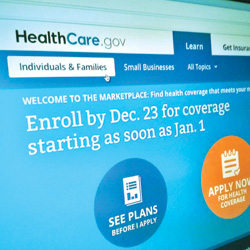
Following the passage of the Affordable Care Act, a transformation is required to meet the healthcare needs of the medically underserved.
Remember the excitement of starting your first “real” job—the one your parents dreamed you would get that included health insurance benefits? Imagine you’re a young adult, and you’ve landed that job of your dreams. Within weeks of starting, you’re not feeling well, so you go to the doctor. At this point, you are in the initial period of employment, and your health insurance benefits have not begun. Then the unthinkable happens—you’re diagnosed with cancer. You just started working, so you have no savings or assets to support the treatment necessary to save your life. How could this happen?! You’ve done everything you’re supposed to do to be independent and care for yourself.
This was the grim reality faced by a Heartland Community Health Clinic patient prior to the passage of the 2010 Affordable Care Act. For this young woman, excitement turned into fear and anxiety, and her energy refocused to figuring out how to get access to critical treatment services because she had no health insurance coverage.
The search for help revealed a safety net for the medically underserved. Through the collaboration of Heartland Community Health Clinic and local community health providers, she was able to get the treatment and care she needed. As a result, she is alive today, working her dream job that includes health insurance benefits.
Helping medically underserved people receive the care they need to be healthy so they can achieve their dreams continues to be Heartland’s mission. Achieving this mission following the passage of the Affordable Care Act requires the transformation of challenges into opportunities, particularly in three primary areas: insurance coverage, access to care and workforce changes.
Increased Insurance Coverage
Today, Heartland has certified assistors who conduct outreach and enrollment activities to help the clinic’s eligible patients and service area residents through the process of finding affordable health insurance options, selecting a plan and enrolling for coverage. The assistors are available during convenient hours at a number of locations throughout the community—such as local libraries, community-based organizations and health departments—to ensure easy access to the information and support needed to navigate the process. They can help find affordable options for coverage under Medicaid, the Health Insurance Marketplace or the Children’s Health Insurance Program. As a result, access to health insurance coverage is expected to rise. Serving these additional patients with insurance will be critical to Heartland’s ability to help pay for those who don’t have insurance. In its role as a safety net, Heartland expects to continue to serve a significant number of patients without any insurance. A challenge presents an opportunity.
Expanded Access to Care
With the increased number of people enrolled in health insurance, Heartland anticipates a growing number of individuals will begin searching for a doctor. This search will be complicated by the fact that there is a shortage of primary care physicians, estimated by the Association of American Medical Colleges to reach 90,000 doctors over the next 10 years. So, just as millions of Americans are able to afford healthcare, the shortage of family doctors makes it more difficult to get access to that care.
In addition, shortages of nurse practitioners and nurses are also expected to grow as more patients seek access to care. As these shortages impact every aspect of our local healthcare system, Heartland is working with other local providers to address community-wide health issues by using population-based strategies. For example, a broad range of healthcare providers are working together to develop strategies to reduce the number of people with high blood pressure. A challenge presents an opportunity.
Workforce Changes
As this challenge of the shortage of healthcare professionals grows, opportunities for new models of clinical care have emerged. Heartland has elected to adopt the patient-centered medical home model of care to improve both the quality and efficiency of care. This model uses a physician- or nurse practitioner-led team to provide continuous, comprehensive, coordinated and patient-centered care. Everyone on the team, including the patient, is expected to contribute to their fullest potential. In addition to addressing workforce shortages, the rewards for adopting this team-based approach include improvement in the patient’s healthcare experience and improved health outcomes. A challenge presents an opportunity.
The 2010 Affordable Care Act brings many challenges to the healthcare system, including community health centers like Heartland Community Health Clinic. Within these challenges, however, Heartland sees many opportunities to continue to achieve its mission to meet the healthcare needs of the medically underserved. iBi
Farrell Davies is chief executive officer of Heartland Community Health Clinic in Peoria. For more information, visit www.heartlandchc.org.

